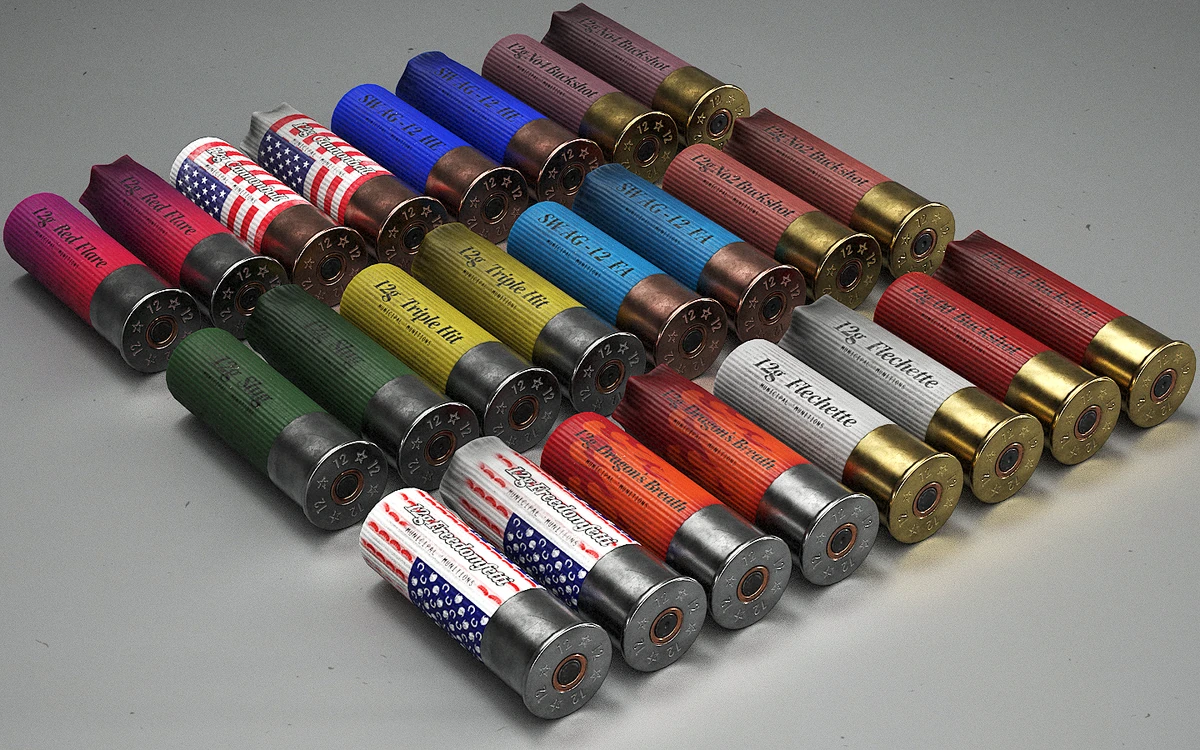Buckshot is a type of shotgun ammunition consisting of large pellets designed for close-range effectiveness.
Commonly used in hunting, home defense, and law enforcement, buckshot’s multiple pellets spread out when fired, increasing the chances of hitting the target.
Its different sizes and configurations allow for versatility in various scenarios, from taking down animals to protecting homes.
Understanding its characteristics and applications can help you choose the right type for your needs.
Types of Buckshot
| Buckshot Type | Pellet Diameter | Common Uses | Recoil |
|---|---|---|---|
| No. 4 | 0.24 inches | Small game, and home defense | Low |
| No. 1 | 0.30 inches | Medium game, home defense | Medium |
| 00 | 0.33 inches | Large game, law enforcement, home defense | High |
| 000 | 0.36 inches | Large game, tactical uses | Very High |
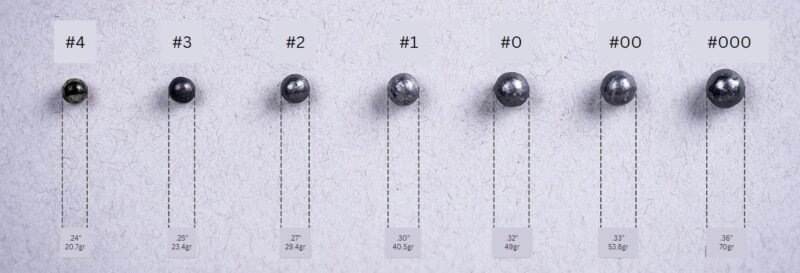
Buckshot is a type of shotgun ammunition consisting of multiple large pellets, designed for significant stopping power at short ranges. Each type of buckshot has unique characteristics, making it suitable for different applications. The following sections delve into the specifics of each type.
No. 4 Buckshot
It is composed of smaller pellets, with each measuring approximately 0.24 inches in diameter. It is often used for hunting small game and for home defense scenarios where over-penetration might be a concern.
The smaller size of the pellets results in a higher number of pellets per shell, increasing the likelihood of hitting the target. This type has a relatively low recoil, making it easier to handle, especially for those who might be new to shotguns or are recoil-sensitive.
No. 1 Buckshot
With a pellet diameter of 0.30 inches, No. 1 buckshot strikes a balance between size and number of pellets. It is effective for hunting medium-sized game and is also favored in home defense for its effective stopping power without excessive penetration.
The recoil is moderate, offering a manageable shooting experience while still delivering significant impact.
00 Buckshot
Also known as a double-aught buckshot, it is the most popular and widely used type. Each pellet is about 0.33 inches in diameter. This type is renowned for its effectiveness in both law enforcement and home defense.
The size and weight of the pellets ensure deep penetration and substantial stopping power, making them capable of incapacitating threats quickly. However, this comes with a higher recoil, which can be challenging for some shooters to manage. Its widespread availability makes it a go-to choice for many applications.
000 Buckshot
The largest common buckshot size is 000, or triple-aught, with pellets measuring 0.36 inches in diameter. This type is used for the largest game and specific tactical applications where maximum penetration is needed.
Due to the size and weight of the pellets, 000 buckshot generates very high recoil, requiring substantial control and experience from the shooter. It is less common than 00 buckshot but still serves a critical role in scenarios demanding maximum stopping power.
Uses of Buckshot
Shotgun ammunition with large pellets has a variety of applications due to its power and effectiveness at close range. The primary uses include hunting, home defense, and law enforcement.
Each of these scenarios benefits from the unique properties of this type of ammunition, offering a balance of spread and stopping power that other types of shot can’t match.
Hunting
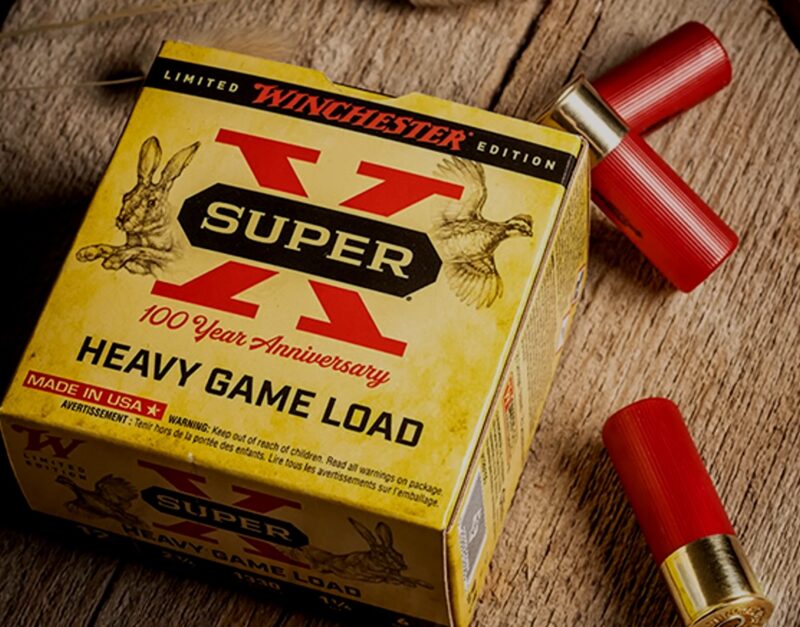
When it comes to hunting, this ammunition is favored for its ability to take down medium to large games at short distances. The spread of the pellets increases the likelihood of hitting the target, which is particularly useful in dense brush or when the target is moving quickly.
Hunters often choose this type for deer and other similarly sized games because the pellets can penetrate deeply and cause significant damage, ensuring a humane kill. The size of the pellets used can vary depending on the game being hunted, with smaller pellets for smaller animals and larger pellets for bigger game.
Home Defense
The stopping power and spread make it an ideal choice. The multiple pellets create a wider pattern upon firing, increasing the chances of hitting an intruder even under stress or in low-light conditions. This type of ammunition is effective at short ranges, which is typically the distance at which home defense encounters occur.
The immediate stopping power provided by this ammunition can incapacitate a threat quickly, reducing the risk to the homeowner and their family. The choice of pellet size can also influence penetration, with smaller pellets reducing the risk of over-penetration through walls.
Law Enforcement
Law enforcement agencies use this type of ammunition for similar reasons as homeowners: its stopping power and effectiveness at short range. Police officers may carry shotguns loaded with this ammunition for situations where they need to quickly stop a threat.
The wide spread of pellets can be advantageous in dynamic and high-stress situations where precision shooting is more challenging. Law enforcement agencies typically use this ammunition to ensure that a suspect is incapacitated rapidly, reducing the risk to officers and bystanders. Its use in law enforcement is well-documented, and it remains a staple in many departments’ arsenals.
Hunting with Buckshot
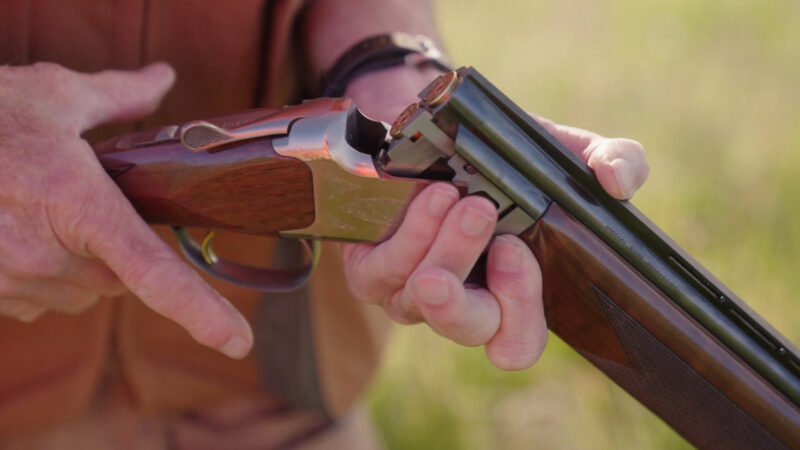
When hunting, the primary advantage of this ammunition is its ability to deliver multiple projectiles with a single shot, increasing the chances of a successful hit. This is particularly beneficial when hunting in dense cover or when the target is moving. The spread pattern of the pellets can cover a larger area, making it more likely to hit vital areas of the game.
Choose the Right Size
Selecting the appropriate size of pellets is crucial for effective hunting. For smaller game, such as coyotes or small deer, smaller pellets like No. 4 can be sufficient. These pellets provide a higher number of projectiles per shell, increasing the hit probability.
For larger game, such as larger deer or elk, larger pellets like 00 or 000 are preferred. These larger pellets deliver more energy and can penetrate deeper, ensuring a quicker and more humane kill.
Range and Accuracy
The effective range for hunting with this type of ammunition is typically up to 50 yards. Beyond this distance, the spread of the pellets becomes too wide, reducing the likelihood of hitting the target effectively.
Hunters must practice to understand the spread pattern of their ammunition at various distances, ensuring they can make accurate and ethical shots. Understanding the limitations of the ammunition and the specifics of the hunting environment is crucial for success.
Home Defense with Buckshot
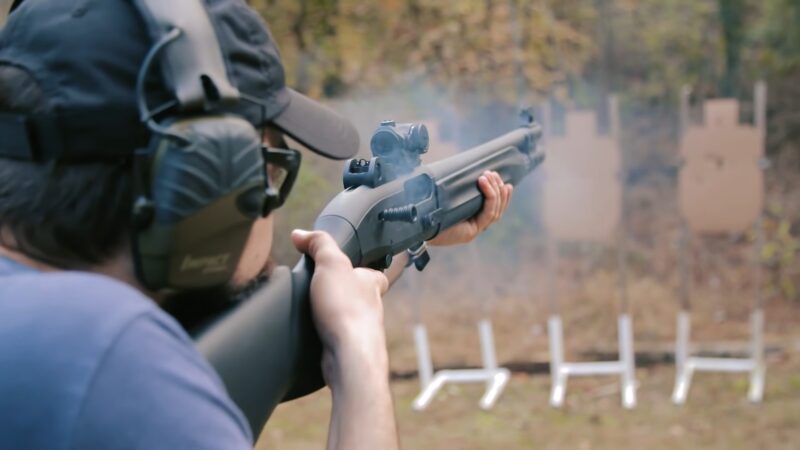
Using this type of ammunition for home defense offers several advantages, primarily related to its stopping power and spread pattern. In a home defense situation, the ability to quickly incapacitate a threat is paramount, and this ammunition is designed to do just that.
Immediate Stopping Power
One of the key benefits of using this ammunition for home defense is its immediate stopping power. The multiple pellets create a devastating wound channel, significantly increasing the chances of incapacitating an intruder with a single shot.
This is crucial in high-stress situations where precision may be compromised, and the threat needs to be neutralized quickly to ensure the safety of the occupants.
Spread and Accuracy
The spread pattern of the pellets is particularly advantageous in home defense scenarios. At typical home defense ranges, usually within 20 yards, the spread can cover a larger area, reducing the need for precise aiming.
This increases the likelihood of hitting the target, even if the shooter is under stress or in low-light conditions. However, it is essential to practice with the specific ammunition to understand its spread pattern and ensure that it is suitable for the home layout.
Penetration Concerns
While this type of ammunition is effective for stopping intruders, penetration through walls and potential collateral damage must be considered. Smaller pellets, like No. 4, can reduce the risk of over-penetration, making them a safer choice for homes in densely populated areas.
Larger pellets, such as 00, offer greater stopping power but may pose a higher risk of penetrating walls and causing unintended harm. Balancing stopping power with safety is crucial when selecting the appropriate type for home defense.
Material Variations
Shotgun ammunition with large pellets traditionally uses lead for its projectiles. However, environmental and performance considerations have led to the development of alternative materials.
These variations offer different benefits and drawbacks, impacting how the ammunition performs in various scenarios.
Lead
Lead remains the most common material used in these pellets due to its density and malleability. Lead pellets deliver significant energy upon impact and deform to create larger wound channels, which is advantageous for both hunting and self-defense.
However, lead poses environmental hazards, particularly in wetlands and other sensitive areas. As a result, some regions have regulations limiting or banning the use of lead ammunition.
Copper
Copper-plated pellets are a popular alternative to lead. The plating helps reduce deformation upon firing, resulting in a tighter spread and more consistent performance. Copper is less toxic than lead, making it a more environmentally friendly option. Additionally, copper’s hardness enhances penetration, which can be beneficial in scenarios requiring deeper impact.
Tungsten
Tungsten is another material used in premium shotgun ammunition. Tungsten pellets are denser than lead, providing superior penetration and energy transfer. This makes them highly effective for hunting larger game and for situations requiring maximum stopping power.
Tungsten is also environmentally friendly, as it is non-toxic and does not pose the same risks as lead. However, tungsten ammunition is more expensive, which can be a limiting factor for some users.
Steel
Steel pellets are often used as a lead-free alternative, particularly in areas with strict environmental regulations. While steel is not as dense as lead or tungsten, advancements in manufacturing have improved its performance.
Steel pellets are harder than lead, reducing deformation and maintaining a consistent pattern. They are also significantly less expensive than tungsten, making them a cost-effective choice for hunters and shooters looking to comply with lead-free regulations.
Bismuth
Bismuth is a lesser-known but effective alternative to lead. It is denser than steel and has similar malleability to lead, providing good energy transfer and penetration. Bismuth is non-toxic and safe for use in environmentally sensitive areas.
Its performance is comparable to lead, making it a suitable replacement for traditional pellets. However, like tungsten, bismuth can be more expensive, limiting its widespread adoption.
Modern Innovations
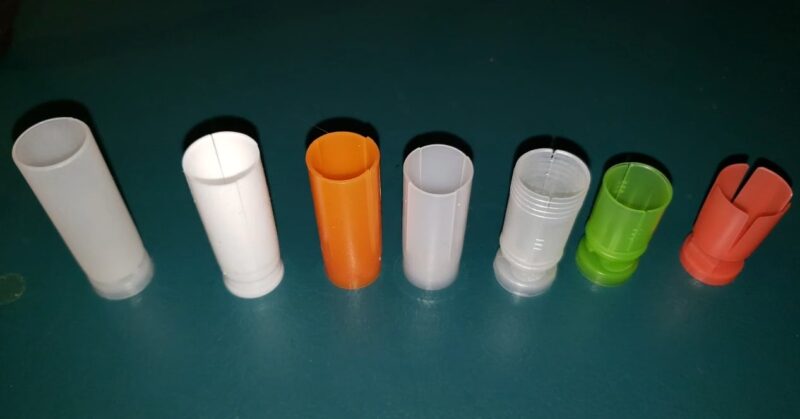
The development of shotgun ammunition with large pellets has seen significant advancements over the years. These innovations aim to improve performance, safety, and environmental impact, offering shooters and hunters better options for their specific needs.
Improved Wad Designs
Modern wad designs have enhanced the performance of this ammunition by improving the spread and consistency of the pellets. Wads are the plastic or paper components that separate the shot from the powder in the shell.
Innovations like the FliteControl wad by Federal Premium help maintain a tighter pattern by controlling the dispersion of the pellets more effectively. This results in better accuracy and increased stopping power at various ranges.
High-Density Materials
The introduction of high-density materials like tungsten and bismuth has revolutionized shotgun ammunition. These materials offer superior penetration and energy transfer compared to traditional lead, making them ideal for both hunting and tactical applications.
High-density pellets can penetrate deeper and deliver more energy to the target, increasing their effectiveness in critical situations.
Reduced-Recoil Loads
Advancements in ammunition design have led to the development of reduced-recoil loads. These loads use a combination of lighter pellets and modified powder charges to produce less recoil while maintaining sufficient stopping power.
Reduced recoil loads are particularly beneficial for home defense and law enforcement, where quick follow-up shots may be necessary. They also make shooting more manageable for individuals who are sensitive to recoil.
Smart Ammunition
Technological advancements have introduced smart ammunition, designed to improve safety and performance. Some modern shells include features like electronic primers and advanced ballistic tracking.
These innovations allow for more precise control over the firing process and can provide shooters with data on their performance. Smart ammunition represents the cutting edge of shotgun technology, offering a glimpse into the future of shooting sports and tactical applications.
FAQs
What is the effective range of buckshot?
The effective range typically ranges from 20 to 50 yards, depending on the size of the pellets and the specific load. Beyond this range, the spread of the pellets becomes too wide to ensure consistent accuracy and stopping power.
Can buckshot be used in all shotguns?
Not all shotguns are designed to handle heavy loads. It’s essential to check the manufacturer’s recommendations for your specific shotgun model to ensure it can safely fire this type of ammunition. Some shotguns, especially older or less robust models, may not be suitable for repeated use of heavy loads.
How do chokes affect the performance of buckshot?
Chokes can significantly influence the spread and pattern of pellets. A tighter choke will keep the pellets together for a longer distance, resulting in a denser pattern. This can be beneficial for longer-range shots but may reduce the spread necessary for close-range targets.
Is it legal to use buckshot for hunting everywhere?
Hunting regulations vary by state and country. Some regions have specific rules regarding the use of certain types of ammunition, including restrictions on the use of lead pellets. Always check local hunting laws and regulations to ensure compliance.
What are the safety precautions when using buckshot?
Safety precautions include proper storage of ammunition, regular maintenance, and inspection of your shotgun, and ensuring that you are aware of your target and what lies beyond it to prevent accidental injuries. Wearing appropriate hearing and eye protection is also crucial when practicing with this type of ammunition.
Last Words
Each type of ammunition offers unique benefits and drawbacks, from the size of the pellets to the material used. Advances in technology and materials have improved performance, making it more versatile and effective than ever.
By considering factors like recoil, penetration, and the specific requirements of your application, you can choose the right buckshot for your needs, ensuring safety and effectiveness.

